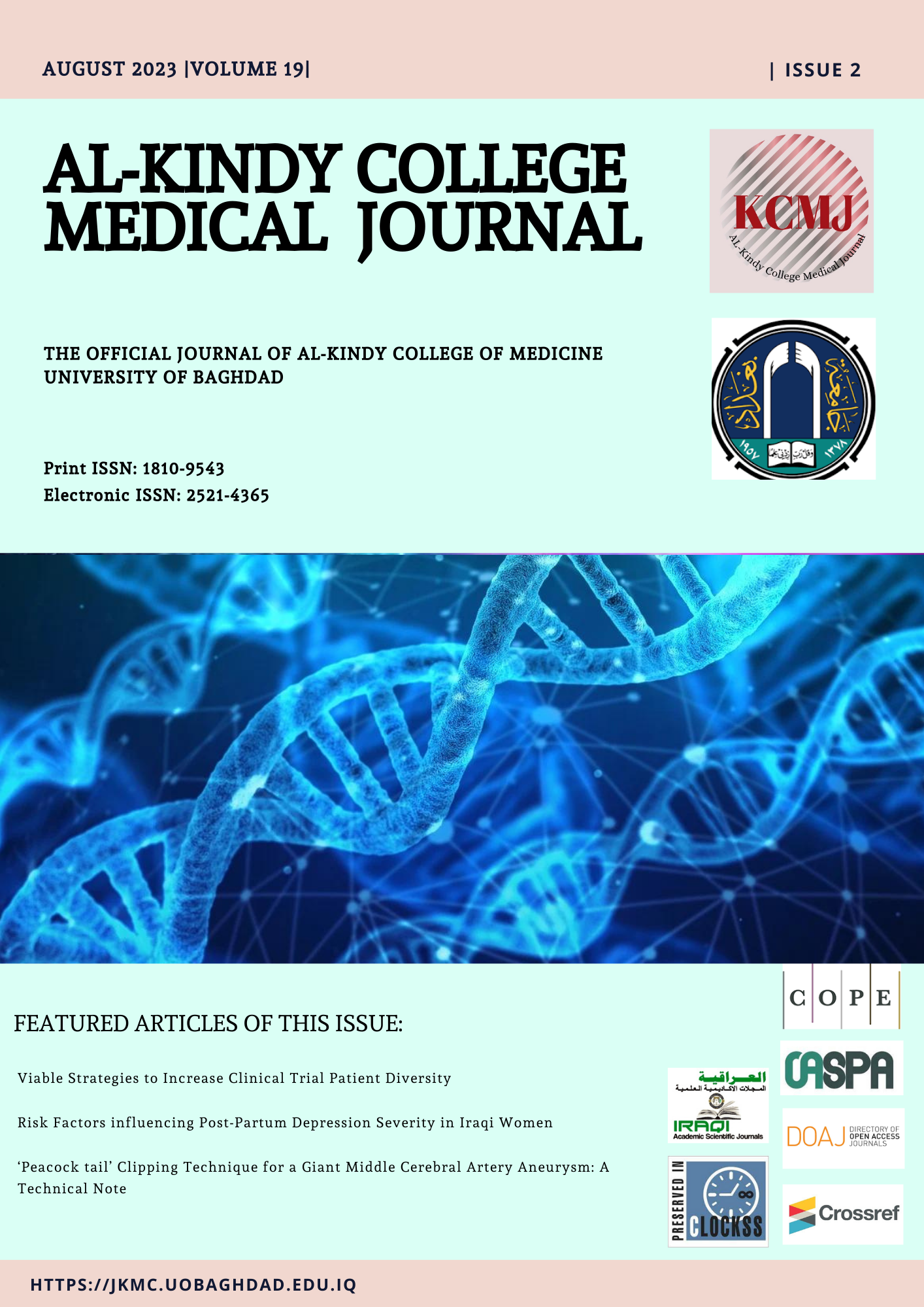‘Peacock tail’ Clipping Technique for a Giant Middle Cerebral Artery Aneurysm: A Technical Note
DOI:
https://doi.org/10.47723/kcmj.v19i2.1060Keywords:
Giant aneurysm, middle cerebral artery, clip reconstructionAbstract
Background: Giant middle cerebral artery (MCA) aneurysms are surgically challenging lesions. Because of the complexity and variability of these aneurysms, a customized surgical technique is often needed for each case. In this article, we present a modified clip reconstruction technique of a ruptured complex giant partially thrombosed middle cerebral artery aneurysm.
Case description: The aneurysm was exposed using the pterional approach. Following proximal control, the aneurysm sac was decompressed. Then, we applied permanent clips to reconstruct the aneurysm neck. The configuration of the aneurysm mandated a tailored clipping pattern to account for residual aneurysm sac sagging beyond the confinement of the single inflow and the two outflow channels. As a result, clipping in a fanning pattern was done to obliterate the lateral extensions while retaining a smooth curvature of the reconstructed neck. This final clipping pattern mirrored the arrangement of the peacock tail feathers. The 'peacock tail’ clipping technique can be thought of as a variation of the traditional straight tandem clipping, also known as 'picket-fence,' applied to less complicated aneurysm configurations.
Conclusion: Giant MCA aneurysms may demand an adaptive clipping technique to account for the unique geometry of each aneurysm. In this paper, we described the 'peacock tail’ clipping technique for clip reconstruction of a giant complex partially thrombosed M2 MCA aneurysm as a modification of the conventional tandem clipping technique.
Downloads
Published
Issue
Section
License
Copyright (c) 2023 AL-Kindy College Medical Journal

This work is licensed under a Creative Commons Attribution 4.0 International License.














